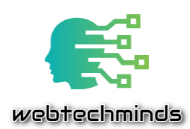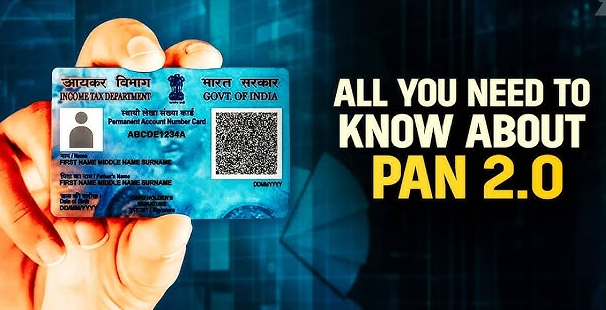What Is ChatGPT? Check it Out ,You Need to Know

What is ChatGPT?
ChatGPT is an advanced artificial intelligence (AI) chatbot that leverages sophisticated natural language processing techniques to generate dialogue that closely mirrors human conversation. This language model is capable of not only answering inquiries but also crafting a wide range of written materials, encompassing articles, social media posts, essays, code, and emails. Through its nuanced understanding of context and language, ChatGPT can engage in complex interactions, producing content that reflects a high level of coherence and relevance across various domains.
ChatGPT represents a sophisticated form of generative AI—a technology designed to enable users to input prompts and receive AI-generated outputs that resemble human-created images, text, or videos. Comparable to the automated chat services commonly employed on customer service websites, ChatGPT allows individuals to pose questions or seek further clarification on its responses. The acronym GPT stands for “Generative Pre-trained Transformer,” a term that describes the underlying mechanism by which ChatGPT interprets user requests and constructs its replies. The model undergoes training through reinforcement learning, guided by human feedback and reward systems that evaluate and prioritize the most effective responses. This iterative feedback loop enhances ChatGPT’s capabilities, continually refining its performance through advanced machine learning techniques to generate increasingly accurate and contextually appropriate interactions.
Who created ChatGPT?
ChatGPT was developed by OpenAI, an artificial intelligence research organization that introduced the tool in November 2022. OpenAI was established in 2015 by a collective of entrepreneurs and researchers, including prominent figures such as Elon Musk and Sam Altman. The organization has garnered substantial support from a variety of investors, with Microsoft being one of the most significant backers. In addition to ChatGPT, OpenAI is also known for creating DALL-E, an AI system that generates artwork from textual descriptions, further showcasing the company’s pioneering contributions to the field of generative AI.
How does ChatGPT work?
ChatGPT operates through its Generative Pre-trained Transformer (GPT), a sophisticated architecture that employs specialized algorithms to discern patterns within data sequences. Initially, ChatGPT was powered by the GPT-3 large language model, which represents the third iteration of the Generative Pre-trained Transformer series. This neural network-based model is designed to process and analyze vast amounts of data, enabling it to generate coherent and contextually relevant responses. The transformer architecture is central to this process, as it efficiently leverages the extensive data it has been trained on to construct nuanced and informed replies, reflecting a deep understanding of language patterns and structures.
ChatGPT currently offers access to both the GPT-3.5 model and, in a more limited capacity, the GPT-4o language model. For those subscribed to ChatGPT Plus, access to GPT-4 and GPT-4o is available. GPT-4, in particular, is capable of handling more complex tasks than its predecessor, GPT-3.5, such as describing images, generating captions, and producing highly detailed responses that can extend up to 25,000 words.
The underlying mechanism of ChatGPT involves deep learning, a specialized subset of machine learning, implemented through transformer neural networks. These transformers are designed to predict text sequences, whether it be the next word, sentence, or paragraph, based on the patterns observed in their training data.
The training process begins with generic datasets and gradually transitions to more specialized data tailored to specific tasks. ChatGPT initially learns the fundamentals of human language through extensive online text data, and subsequently refines its understanding of conversational dynamics using transcripts of dialogues.
Human trainers play a crucial role in the model’s development by engaging in conversations with the AI and ranking its responses. These rankings inform reward models, which guide the AI in determining the most appropriate and accurate answers. To continuously improve the chatbot’s performance, users can provide feedback by upvoting or downvoting responses using thumbs-up or thumbs-down icons. Additionally, users can offer detailed written feedback to further fine-tune and enhance the AI’s future interactions.
What kinds of questions can users ask ChatGPT?
Users can pose a wide range of questions to ChatGPT, from straightforward inquiries to more complex, abstract ones. For instance, users might ask philosophical questions like “What is the meaning of life?” or factual queries such as “What year did New York become a state?” ChatGPT is particularly adept in STEM fields, capable of debugging code, writing new code, and tackling technical challenges. While there is virtually no restriction on the types of questions that can be asked, it is important to note that ChatGPT’s knowledge is up-to-date only until late 2023.
How are people using ChatGPT?
ChatGPT’s versatility extends far beyond simple conversation, making it a valuable tool in numerous applications. Users have employed ChatGPT for a variety of purposes, including:
- Programming: Writing and debugging computer code.
- Music Composition: Creating musical pieces.
- Email Drafting: Crafting professional and personal emails.
- Content Summarization: Summarizing articles, podcasts, and presentations.
- Social Media: Scripting posts for platforms like Twitter, LinkedIn, and Instagram.
- Article Creation: Generating titles and content for articles and blogs.
- Mathematics: Solving complex math problems.
- SEO: Identifying keywords for search engine optimization.
- Content Creation: Producing quizzes, blog posts, and product descriptions.
- Content Adaptation: Rewording existing material for different formats, such as turning a presentation transcript into a blog post.
- Job Assistance: Aiding in job searches by helping to write resumes and cover letters.
- Trivia and Games: Providing entertainment through trivia questions and interactive games.
- Simplifying Complex Topics: Breaking down intricate subjects into more digestible explanations.
- Scriptwriting: Drafting scripts for videos.
- Market Research: Conducting preliminary research on products and markets.
- Art Generation: Creating artistic images.
A unique aspect of ChatGPT, compared to other chatbots, is its ability to remember the context of previous questions, allowing for more fluid and continuous conversations. This feature enhances its utility in extended dialogues and complex problem-solving scenarios.
What are the benefits of ChatGPT?
As ChatGPT continues to evolve, both businesses and individual users are discovering a growing array of benefits associated with its use. Some of the key advantages include:
1. Efficiency:ChatGPT can automate routine and repetitive tasks, allowing employees to dedicate their time to more complex and strategic responsibilities. This capability enhances overall productivity by reducing the burden of mundane tasks.
2. Cost Savings: Implementing AI-powered chatbots like ChatGPT can be more cost-effective than hiring and training additional personnel. By automating certain functions, businesses can reduce labor costs while maintaining or even improving service quality.
3. Improved Content Quality: Writers can leverage ChatGPT to refine their work, correcting grammatical or contextual errors and generating ideas. Whether improving the language of ordinary text or adding creative expressions, ChatGPT serves as a valuable tool for enhancing written content.
4. Education and Training: ChatGPT functions as a virtual tutor, providing clear explanations on complex topics. Users can request guides, ask for clarifications, and receive step-by-step instructions, making it a useful resource for learning and professional development.
5. Better Response Time: ChatGPT delivers instant responses, significantly reducing wait times for users seeking assistance. This immediacy improves the user experience, especially in customer service and support scenarios.
6. Increased Availability: AI models like ChatGPT operate 24/7, offering continuous support and assistance regardless of time zones. This around-the-clock availability is particularly beneficial for global businesses and users who require immediate help.
7. Multilingual Support: ChatGPT is capable of communicating in multiple languages and providing translations, making it a valuable tool for businesses with international audiences and users who require content in different languages.
8. Personalization:ChatGPT can tailor its responses based on the user’s preferences and past interactions, delivering a more personalized and relevant experience. This adaptability enhances user engagement and satisfaction.
9. Scalability:Unlike human operators, ChatGPT can manage interactions with a vast number of users simultaneously. This scalability is crucial for applications that experience high volumes of user engagement, such as online customer support or large-scale educational platforms.
10. Natural Language Understanding: ChatGPT excels at understanding and generating humanlike text, making it effective for a variety of tasks, including content generation, answering questions, engaging in conversations, and providing detailed explanations.
11. Digital Accessibility: ChatGPT and similar AI chatbots contribute to digital accessibility by offering text-based interactions that may be easier for individuals with disabilities to navigate. This enhances the inclusivity of digital services and platforms, ensuring broader access to information and assistance.
These benefits underscore ChatGPT’s versatility and potential impact across different sectors, from business operations to education and customer service. As the technology continues to develop, its applications and advantages are likely to expand even further.
What are the limitations of ChatGPT? How accurate is it?
ChatGPT, while powerful, has several limitations that affect its performance and accuracy. These limitations include:
1. Limited Understanding of Human Language Complexity: ChatGPT is designed to generate text based on patterns in the input it receives, but it lacks a deep understanding of the nuances and complexities of human language. This can result in responses that may seem superficial or lack genuine insight.
2. Mechanical and Unnatural Responses: Because ChatGPT predicts the next word in a sequence based on its training data, its output can sometimes sound repetitive or overly mechanical. For instance, it might overuse certain words or phrases like “the” or “and,” leading to content that requires human review and editing to achieve a more natural flow.
3. Lack of Source Citation and Analytical Depth: While ChatGPT can summarize information, it typically does not cite sources or provide in-depth analysis of data or statistics unless explicitly prompted to do so. Even when it offers statistics, it may fail to provide meaningful commentary or context, which can limit the usefulness of its responses in more complex discussions.
4. Difficulty Understanding Sarcasm and Irony: ChatGPT, being trained on large datasets of text, often struggles to grasp sarcasm, irony, or other subtle linguistic cues that are integral to human communication. This can lead to misunderstandings or inappropriate responses when dealing with nuanced or emotionally charged topics.
5. Limited Contextual Shifting: ChatGPT sometimes fixates on specific aspects of a question and struggles to shift its focus when subsequent questions are asked. For example, if you inquire about the suitability of a horse as a pet based on its size, and then follow up with a similar question about a cat, ChatGPT might continue to emphasize size rather than adjusting its response to address the broader context of pet ownership.
6. Avoidance of Political Topics: ChatGPT generally avoids engaging in political debates or taking sides on controversial issues. While this is intended to maintain neutrality, it has led to accusations of bias or favoritism toward certain political viewpoints. This limitation can be frustrating for users seeking balanced or in-depth political analysis.
Accuracy of ChatGPT:
The accuracy of ChatGPT is influenced by several factors, including the quality of the training data, the complexity of the query, and the model’s ability to interpret the user’s intent. While ChatGPT can produce accurate and relevant responses in many cases, it is not infallible. The model can generate incorrect or misleading information, particularly when dealing with highly specialized topics, ambiguous queries, or contextually complex scenarios. Additionally, since ChatGPT does not have real-time access to external databases or the ability to verify facts, it might provide outdated or inaccurate information, especially if the data it was trained on is no longer current.
Overall, while ChatGPT is a powerful tool for generating humanlike text and assisting with a wide range of tasks, its limitations require users to approach its output with a critical eye, especially in situations that demand precision, nuance, and contextual understanding.
What are the ethical concerns associated with ChatGPT?
ChatGPT, while offering numerous benefits, also raises several ethical concerns that stem from its capabilities and potential misuse. Key ethical issues include:
1. Bias:ChatGPT, like other AI systems, can inadvertently perpetuate biases present in its training data. This can result in responses that reflect societal biases related to race, gender, ethnicity, or other factors. Such biases can impact the fairness and inclusivity of the information and services provided by the AI.
2. Privacy and Security: The use of ChatGPT involves handling sensitive information, which raises concerns about privacy and data security. While the system does not store personal data from interactions, the potential misuse of AI-generated content could jeopardize user privacy if not managed properly.
3. Plagiarism and Academic Integrity: ChatGPT’s ability to generate text raises ethical concerns in educational settings. There is a risk of students using the tool to cheat, plagiarize, or produce work that is not their own. For instance, ChatGPT has been used to write essays and complete assignments, leading to debates about academic honesty and the integrity of educational assessments.
4. Misinformation and Deceitful Use: ChatGPT’s humanlike text generation can be exploited for spreading misinformation or engaging in deceitful practices. This includes creating misleading content, impersonating individuals, or generating false narratives. The incident with CNET, where ChatGPT-generated articles contained errors, underscores the risks associated with relying on AI for content creation without proper oversight.
5. Plagiarism Detection Challenges: To address concerns about cheating and plagiarism, OpenAI introduced an AI text classifier intended to differentiate between human and AI-generated text. However, this tool was withdrawn after six months due to its low accuracy in distinguishing between the two. Alternative tools, like Copyleaks or Writing.com, attempt to address these issues, and OpenAI plans to implement a watermarking system for longer texts to identify AI-generated content.
6. Cybersecurity Risks: ChatGPT’s ability to write code presents potential cybersecurity threats. Malicious actors could use the AI to generate malware or exploit vulnerabilities in systems. While OpenAI has taken steps to prevent such misuse by blocking requests related to creating malware, there is always the risk that sophisticated threat actors might find ways to bypass these safeguards.
7. Impersonation and Identity Theft: ChatGPT can be trained to mimic an individual’s writing style, which raises concerns about its use in impersonation. Such capabilities could enable deceptive practices, such as impersonating trusted figures to obtain sensitive information or disseminate disinformation, thereby posing risks to personal and organizational security.
Addressing these ethical concerns requires ongoing vigilance, robust safeguards, and responsible use of the technology. Ensuring that AI systems like ChatGPT are used ethically involves implementing effective measures to detect misuse, promoting transparency, and continuously refining the technology to mitigate risks.
Bias in training data
One of the foremost ethical concerns with ChatGPT is the issue of bias in its training data. Since ChatGPT learns from vast amounts of text data collected from the internet, any inherent biases present in this data can be reflected in the model’s outputs. These biases might include prejudices related to race, gender, ethnicity, or other socio-cultural factors, which can result in skewed or unfair responses.
Additionally, ChatGPT lacks the ability to comprehend or recognize offensive or discriminatory language inherently. This means that, despite efforts to mitigate such content, the model might inadvertently produce or reinforce biased or harmful language if it appears in the training data.
To address these concerns, it is crucial to thoroughly review and curate the training data to minimize the presence of bias. Efforts should be made to include diverse and representative material to help balance the data and promote more equitable outcomes. However, completely eliminating bias is a complex challenge, as it requires ongoing monitoring, refinement, and the implementation of advanced techniques to detect and mitigate unintended biases.
Replacing jobs and human interaction
As technology progresses, ChatGPT and similar AI systems have the potential to automate a range of tasks traditionally performed by humans, such as data entry, customer service, and translation support. This capability raises concerns about job displacement, as people worry that AI could replace their roles and reduce employment opportunities.
However, instead of merely replacing human workers, ChatGPT can serve as a supportive tool that enhances job functions and creates new opportunities. For instance, legal professionals might leverage ChatGPT to generate summaries of case notes and draft contracts, thereby streamlining their workflow and increasing efficiency. Similarly, copywriters can utilize ChatGPT to brainstorm article outlines and headline ideas, facilitating the creative process and allowing them to focus on more strategic aspects of their work.
By integrating ChatGPT into various job functions, organizations can optimize productivity while also creating new roles and opportunities that arise from the need to manage, oversee, and refine AI-driven processes. This approach emphasizes the potential for AI to complement human skills rather than solely displacing them, fostering a collaborative environment where technology and human expertise work together to achieve better outcomes.
Privacy issues
ChatGPT processes text based on user input, which raises significant privacy concerns. There is a potential risk that the model could inadvertently reveal sensitive information if not properly managed. Additionally, there are concerns about how the model might track and profile individuals by associating user inputs with personal data, such as phone numbers and email addresses. Although the current implementation of ChatGPT does not retain or store personal data from individual interactions, these risks underscore the need for stringent data privacy measures.
In March 2023, Italy’s data protection authority temporarily banned ChatGPT due to concerns that the AI system was in violation of privacy laws. The ban was imposed because the model was alleged to have collected user data for commercial purposes without obtaining appropriate consent. The issue centered around the lack of transparency regarding data collection practices and the potential misuse of personal information. The ban was lifted a month later after OpenAI made necessary adjustments to align with EU data protection regulations, including enhancing transparency and securing proper user consent. This incident highlights the critical importance of adhering to privacy laws and ensuring that AI systems operate within legal and ethical boundaries.
How can you access ChatGPT?
To access ChatGPT, follow these steps:
- Create an OpenAI Account: Visit chat.openai.com and select “Sign Up.” You can sign up by entering your email address or by using your Google or Microsoft account to log in.
- Start a Conversation: Once you have signed up and logged in, you can type a prompt or question into the message box on the ChatGPT homepage.
- Interact with Responses: After receiving a response from ChatGPT, you can:
- Enter a New Prompt: Type a different query to start a new conversation or ask for further clarification on the current topic.
- Regenerate the Response: Request a new response if you want a different answer or if the initial response did not meet your needs.
- Share the Response: Share the generated content if it is useful or relevant to others.
- Like or Dislike the Response: Provide feedback on the response using the thumbs-up or thumbs-down options to help improve the system.
- Copy the Response: Copy the text of the response for use in other documents or communications.
These functionalities allow you to interact with ChatGPT effectively and tailor the conversation to meet your needs.
What to do if ChatGPT is at capacity
If ChatGPT is at capacity, you may encounter issues accessing the service during peak usage times. Here are some steps you can take:
1. Try Different Times: Since capacity issues often occur during peak hours, try accessing ChatGPT at different times of the day. Off-peak hours, such as late at night or early morning, may offer more availability depending on your time zone.
2. Refresh the Browser: Sometimes, simply refreshing your browser can help resolve temporary access issues. This can help you reconnect to the service if the initial attempt was unsuccessful.
3. Upgrade to ChatGPT Plus: Consider subscribing to ChatGPT Plus, which is a premium service typically available even during high-demand periods. The subscription often provides priority access and enhanced performance, helping you bypass capacity issues.
By following these steps, you can improve your chances of accessing ChatGPT and continue using the service effectively.
Is ChatGPT free?
Yes, ChatGPT is available for free through OpenAI’s website, and users can access it by registering for a free OpenAI account. However, the free version comes with some limitations, especially during times of high demand when the service may be at capacity, making it temporarily unavailable.
For those seeking enhanced access and features, OpenAI offers a subscription plan called ChatGPT Plus. This premium option provides several benefits, including:
- Access to GPT-4: Subscribers can use the more advanced GPT-4 model, which offers improved performance and capabilities compared to the free version’s GPT-3.5.
- Faster Response Times: The Plus plan generally ensures quicker responses to user queries.
- No Blackout Windows: The subscription allows users to avoid capacity-related blackouts, ensuring availability even during peak usage times.
- Priority Access to New Features: ChatGPT Plus subscribers often receive early access to new features and updates as they are released.
The ChatGPT Plus subscription is available for $20 per month. This option is ideal for users who require more consistent access or wish to take advantage of the enhanced capabilities provided by GPT-4.
What are the alternatives to ChatGPT?
Due to the popularity of ChatGPT, users may sometimes experience issues accessing the service, especially during high-demand periods. Fortunately, there are several alternatives available that offer similar capabilities, catering to different needs and preferences.
1. Google Gemini (formerly Bard):
In response to ChatGPT, Google introduced Bard in February 2023, which was later rebranded as Gemini. Gemini leverages real-time information from the internet via Google Search to provide up-to-date responses. However, it has faced criticism for inaccuracies, such as incorrectly depicting America’s founding fathers as Black men. Despite these challenges, Gemini remains a strong competitor in the AI space, especially for those seeking real-time data integration.
2. Microsoft Bing with GPT-4 Integration:
Microsoft, a significant investor in OpenAI, has integrated GPT-4 functionality into its Bing search engine. This integration includes a chat mode powered by Microsoft’s Copilot chatbot, allowing users to receive enhanced search results and engage in conversational queries. Bing with Copilot provides a more interactive and comprehensive search experience, making it a strong alternative to ChatGPT.
Other Text Generation Alternatives:
- AI-Writer: A tool focused on generating high-quality content with minimal input.
- Article Forge: Automates content creation, particularly useful for SEO purposes.
- ChatSonic: A versatile AI chatbot designed to generate conversational and content-driven text.
- Copysmith: Specializes in marketing copy, product descriptions, and ad content.
- DeepL Write: An extension of the DeepL translation tool, focusing on writing assistance and content improvement.
- Jasper: A popular AI content generator known for its versatility in creating blog posts, social media content, and more.
- Magic Write: An AI-powered writing assistant, part of the Canva suite, for content creation.
- Open Assistant: An open-source alternative to ChatGPT, emphasizing community-driven development.
- Peppertype: A content generation tool aimed at marketers, offering templates and quick content suggestions.
- Perplexity AI: A chatbot designed for answering questions and providing concise summaries.
- Spellbook: A specialized tool for drafting and editing legal documents.
- Rytr: An AI writing assistant for creating various content types, from blog posts to ad copy.
- YouChat: A chatbot integrated into the You.com search engine, offering conversational search experiences.
Coding Alternatives to ChatGPT:
- AlphaCode: Developed by DeepMind, focused on competitive programming and algorithmic challenges.
- Amazon CodeWhisperer: Amazon’s AI-powered coding assistant integrated into its development environment.
- CodeStarter: A platform designed to help beginners learn coding through interactive exercises.
- CodeWP: A WordPress-specific code generator tailored for plugin and theme development.
- Cody: A coding assistant built for specific tasks and languages.
- Enzyme: A tool designed to automate repetitive coding tasks and streamline development workflows.
- Ghostwriter: Replit’s AI coding assistant, offering code suggestions and debugging help.
- GitHub Copilot: A widely-used AI coding tool that integrates with IDEs to provide real-time code suggestions.
- Mutable.ai: An AI tool that automates code reviews, refactoring, and other development tasks.
- OpenAI Codex: The engine behind GitHub Copilot, capable of generating code snippets in multiple languages.
- Seek: A code generation tool that focuses on generating high-quality, functional code for specific tasks.
These alternatives provide a range of functionalities, from general-purpose chatbots to specialized tools for content creation and coding, offering users multiple options depending on their needs and the specific tasks they wish to accomplish.
ChatGPT updates
ChatGPT has undergone several significant updates and enhancements, reflecting OpenAI’s ongoing efforts to expand its capabilities and improve user experiences. Here’s a summary of the key updates from 2023 to mid-2024:
August 2023: ChatGPT Enterprise Version
In August 2023, OpenAI introduced an enterprise version of ChatGPT, specifically tailored for organizational use. This version includes access to a higher-speed GPT-4 model with a longer context window, allowing for more extensive and complex interactions. Key features include customization options for businesses and enhanced data analysis capabilities. Importantly, this enterprise model ensures data security by preventing the sharing of data outside the organization.
September 2023: Voice and Image Recognition
A major update in September 2023 enabled ChatGPT to recognize images and engage in voice interactions. Users can now upload photos—such as the contents of their refrigerator—and receive personalized suggestions, like dinner ideas based on available ingredients. This update also allows users to ask questions about photos, such as inquiring about landmarks, and to receive historical and factual information in response. Additionally, voice interaction features were introduced, allowing users to speak to ChatGPT and receive spoken responses, making it comparable to other voice assistants. This feature is available on both iOS and Android apps, with image recognition accessible across all platforms, including the web interface.
November 2023: Introduction of Customizable GPTs
In November 2023, OpenAI launched a new feature called GPTs, which allows users to create custom versions of ChatGPT tailored to specific tasks. For instance, a user could design a GPT specialized in generating social media content, debugging code, or drafting product descriptions. This customization is facilitated through the GPT builder, where users can input specific instructions and knowledge files to give the custom GPT context. Alongside this, OpenAI introduced the GPT store, where users can share and monetize their custom bots, further expanding the platform’s ecosystem.
December 2023: Partnership with Axel Springer
OpenAI entered a partnership with Axel Springer, one of Europe’s largest digital publishing houses, to enhance ChatGPT’s news-related capabilities. As part of this agreement, ChatGPT users now have access to summaries of news stories from major publications like Bild, Welt, Business Insider, and Politico. Additionally, OpenAI announced a collaboration with the Associated Press, incorporating their news archive to provide more accurate and current information within ChatGPT’s responses.
May 2024: Release of GPT-4o
In May 2024, OpenAI unveiled GPT-4o, the latest version of its large language model, which has been integrated into ChatGPT. GPT-4o is designed to provide more natural and nuanced interactions, including voice capabilities that allow users to have spoken conversations with ChatGPT and receive spoken replies. This version also supports multimodal input, enabling the model to process and generate both text and images, and has improved its ability to maintain context over extended conversations. GPT-4o is reported to be twice as fast and 50% more cost-effective than GPT-4 when accessed via OpenAI’s API. The rollout of GPT-4o is gradual, with free users having lower usage limits compared to paid subscribers.
July 2024: Advanced Voice Mode
By July 2024, OpenAI introduced an advanced Voice Mode to a select group of ChatGPT Plus users. This feature enhances conversational dynamics, allowing for interruptions and follow-up questions during interactions. The new mode also enables ChatGPT to detect and respond to user emotions more effectively, with responses adjusted to the tone of the conversation. Although the voice is more natural, users are currently limited to four preset voice options.
These updates highlight OpenAI’s commitment to expanding the functionality and versatility of ChatGPT, making it a more powerful tool for both individual users and enterprises. As the platform continues to evolve, users can expect further innovations and improvements in the coming years.
4o



